A WOMAN IN THE LEAD
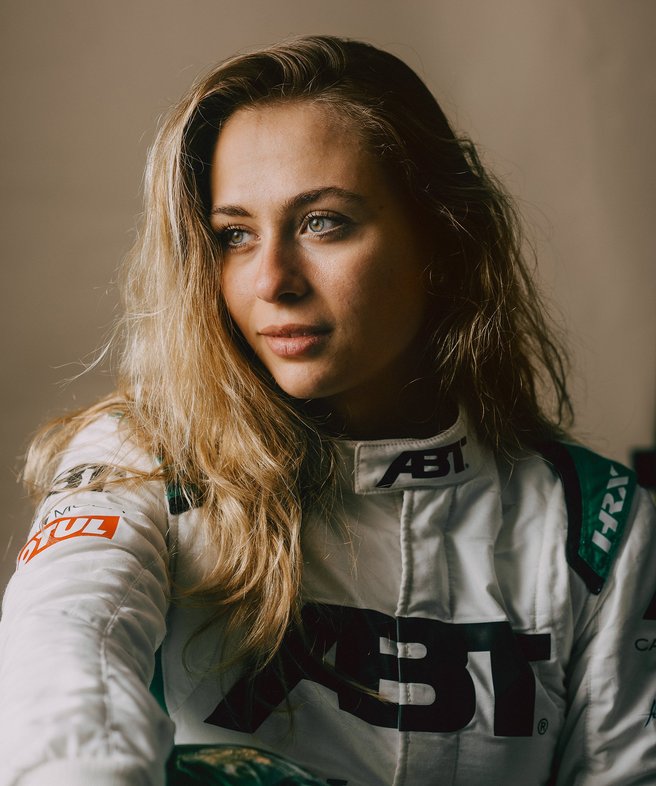
We could start with the foam in her mouth, foam that came from a fire extinguisher and is the first thing that Sophia Flörsch remembers when she thinks about the accident in which she crashed into a photographer’s stand at 276 kilometers per hour.
Or about six months after that, on the final kilometers of the Berlin Marathon, when it was pouring rain and every step was agony, as if her kneecaps were about to explode.
Or even much earlier than that, when Sophia was just fourteen years old, and her teammate’s father accosted her on a go-kart course, saying: “What are you even doing here? A girl, racing!?!”
Or we could start in the future, on a Sunday, when she’s reached her goal of standing at the very top of the winner’s podium and pops the cork of a champagne bottle—as the first woman to win a Formula One or a Formula E race.
Or perhaps we can simply start the story about Sophia Flörsch in the here and now, on a Thursday in early summer, in the living room of a bungalow in Pullach, near Munich, where Germany’s fastest woman racer lives with her father and sister. She’s sitting cross-legged on a beige-colored sofa, wearing a white hoodie with a black heart on the front of it, with silver rings on her fingers and pink-lacquered fingernails.
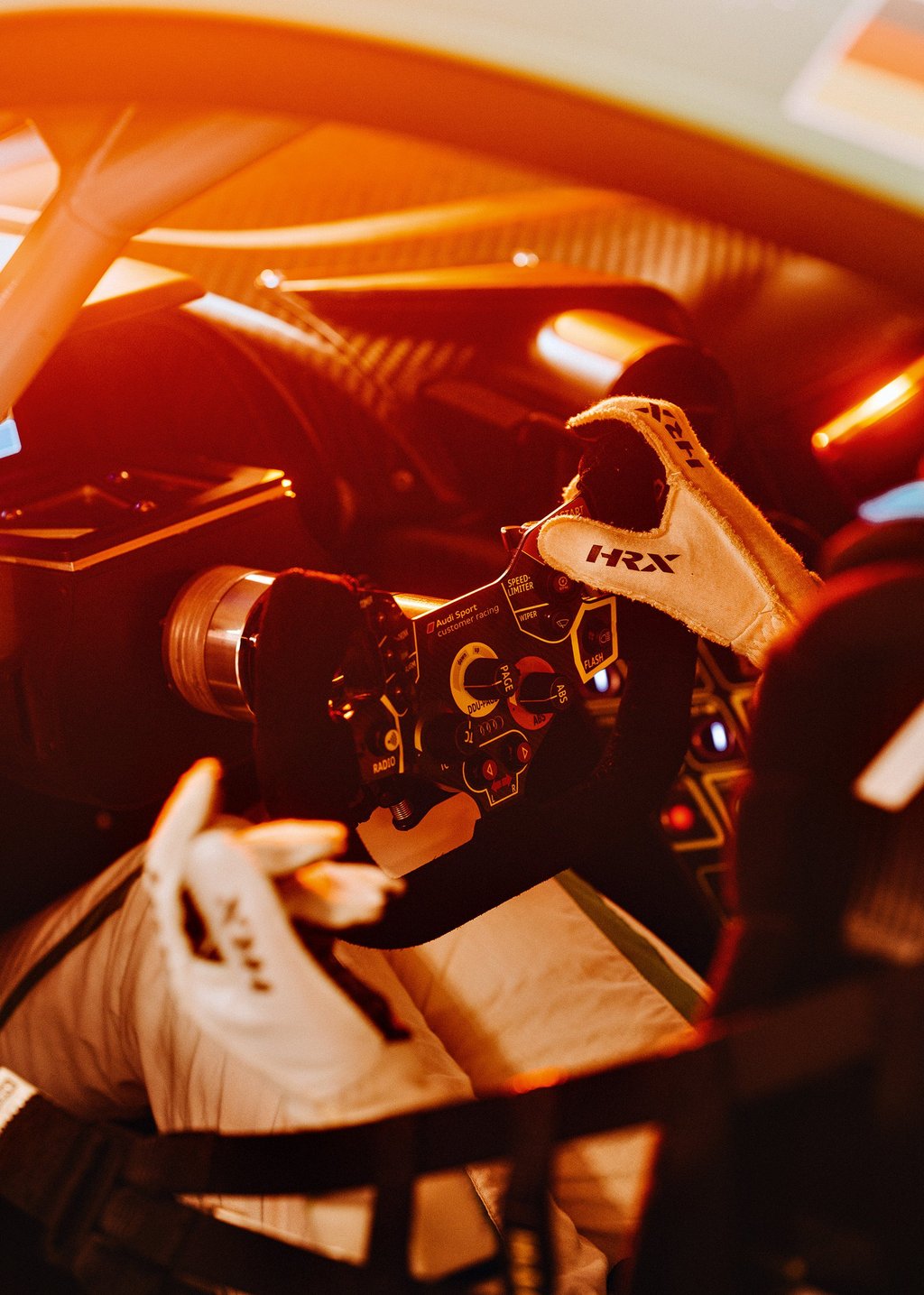
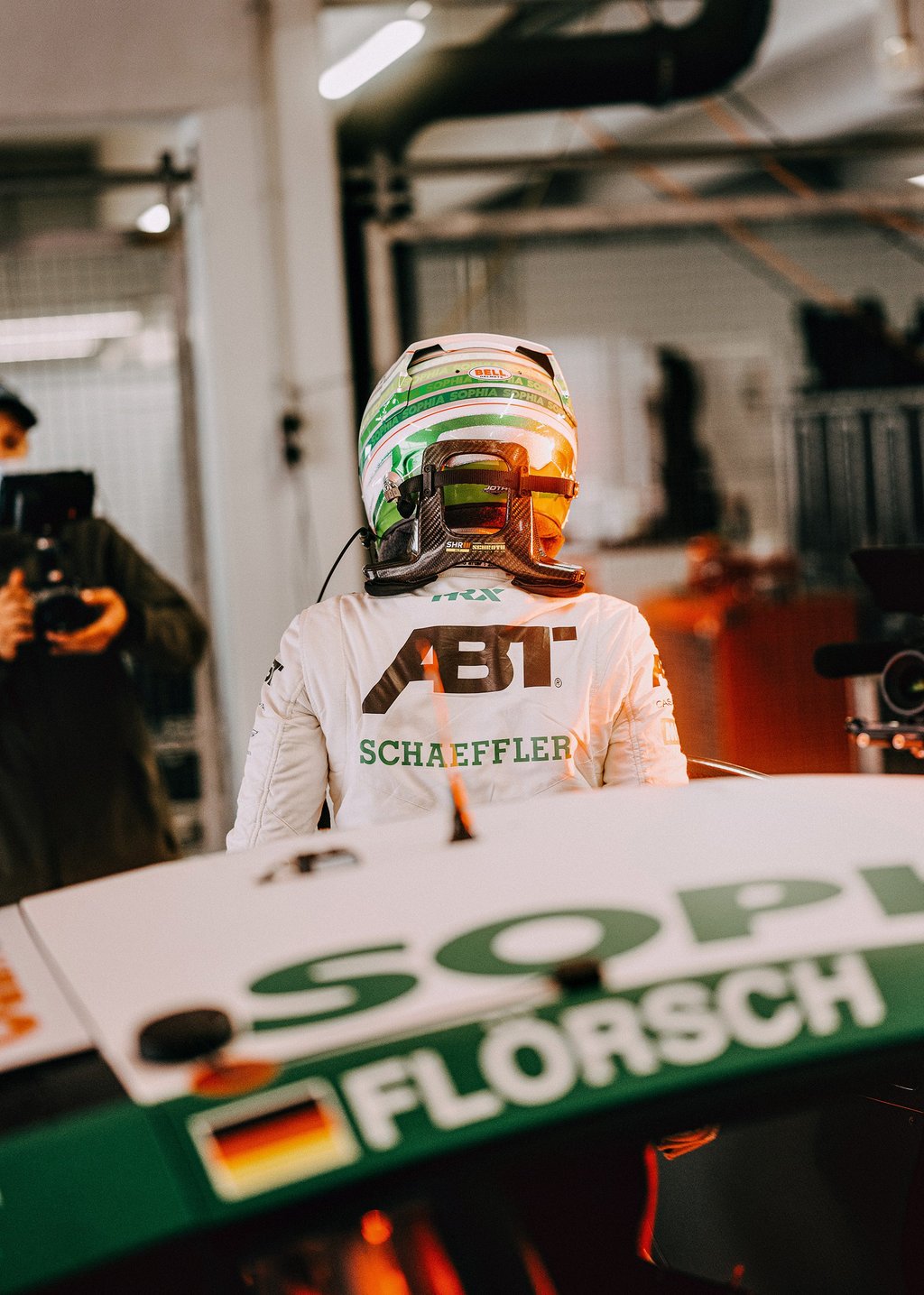
Sophia Flörsch: born on December 1, 2000, European Kart Champion at the age of 9, the first woman on the podium of the ADAC Formula Four at the age of 15. Now, at 20, she’s one of two women drivers in the German Touring Car Masters (DTM)—and that’s just a pitstop on the way to her major goal: she wants to be the first woman to win a race in the premier class.
The girl—now woman—who’s shaking up the macho world of motorsport. It’s “the story” for which television cameras have followed her since childhood and the very one that brought a reporter from the newspaper Süddeutsche Zeitung just yesterday. Articles about her career always deal with the pressing debates of our era, including topics such as gender equality, equal opportunity and emancipation. But does this narrative do justice to this young race driver? Or is the focus on her gender actually part of the problem?
“I didn’t even notice that I was racing against boys at first.”
“I didn’t even notice that I was racing against boys at first,” she says. Outside, a mowing robot zig-zags across the lawn. She was four when her father first took her to a go-kart track to give her a feeling for curves in preparation for learning to ski. “I didn’t realize back then that I was something special there as a girl,” she says. And, in truth, her gender doesn’t really matter to her at all out on the racetrack. Flörsch simply wants to compete against the best—and that’s usually mostly men at the moment.
Despite this, she did notice early on that some people in motorsport saw her as an anomaly. “Do you have any idea how awful it is to be passed on the track by a girl?” one of her competitors once asked, only half-jokingly. Another time, the father of a teammate came to her and said, to her face, that it was impossible for a “girl” to race in Formula One. Flörsch didn’t understand what the man’s problem was. “What did he have against me? What did he have against my dream?” Today she thinks that the man’s rejection might also have been based on the fact that she was ranked ahead of his son.
Prejudice against women drivers in motorsport still runs rampant today, from the kiddie kart circuit to the executive chair of the premier class: “I don’t know whether a woman would physically be able to drive an F1 car quickly,” said Bernie Ecclestone, the Formula One executive at the time, in 2016 “and they wouldn’t be taken seriously.”
Racing drivers are subjected to enormous centrifugal forces—in Formula One, it can be up to five times the force of gravity on curves, so five times the driver’s body weight. This means that drivers need strong muscles in their upper bodies. “I have to train more than the men,” Flörsch explains. She works out in a fitness studio for two to three hours, six days a week. However, what’s crucial in motorsport isn’t the maximum strength, but endurance—and when it comes to stamina, there aren’t that many men who can match Flörsch. The morning of our interview, she received an injection of hyaluronic acid in her right knee, where water keeps building up: a result of the Berlin Marathon in September 2019. Running the race was the brainchild of one of her sponsors, and she spontaneously agreed, even though she’d never run farther than half the distance. Starting at kilometer 30, the pain became intense, and the feeling that her kneecaps were about to explode wasn’t all that far-fetched: in the end, she damaged her cartilage and tore her meniscus. Didn’t she think about quitting? “Nah, giving up isn’t my thing. When I set my mind to something, I follow through.”
“My kid is stubborn,” her father says when his daughter has left for the gym again. He gave up his real estate business to help shepherd his daughter through the circus of the racing circuits. Every other week, he drove her to kart races up and down Italy while she did her homework in the passenger seat. Today you can hear the pride in his voice when describing his daughter’s perseverance: “The worst thing is her head: when she sets her mind to something, she does it 100 percent regardless of the consequences.”
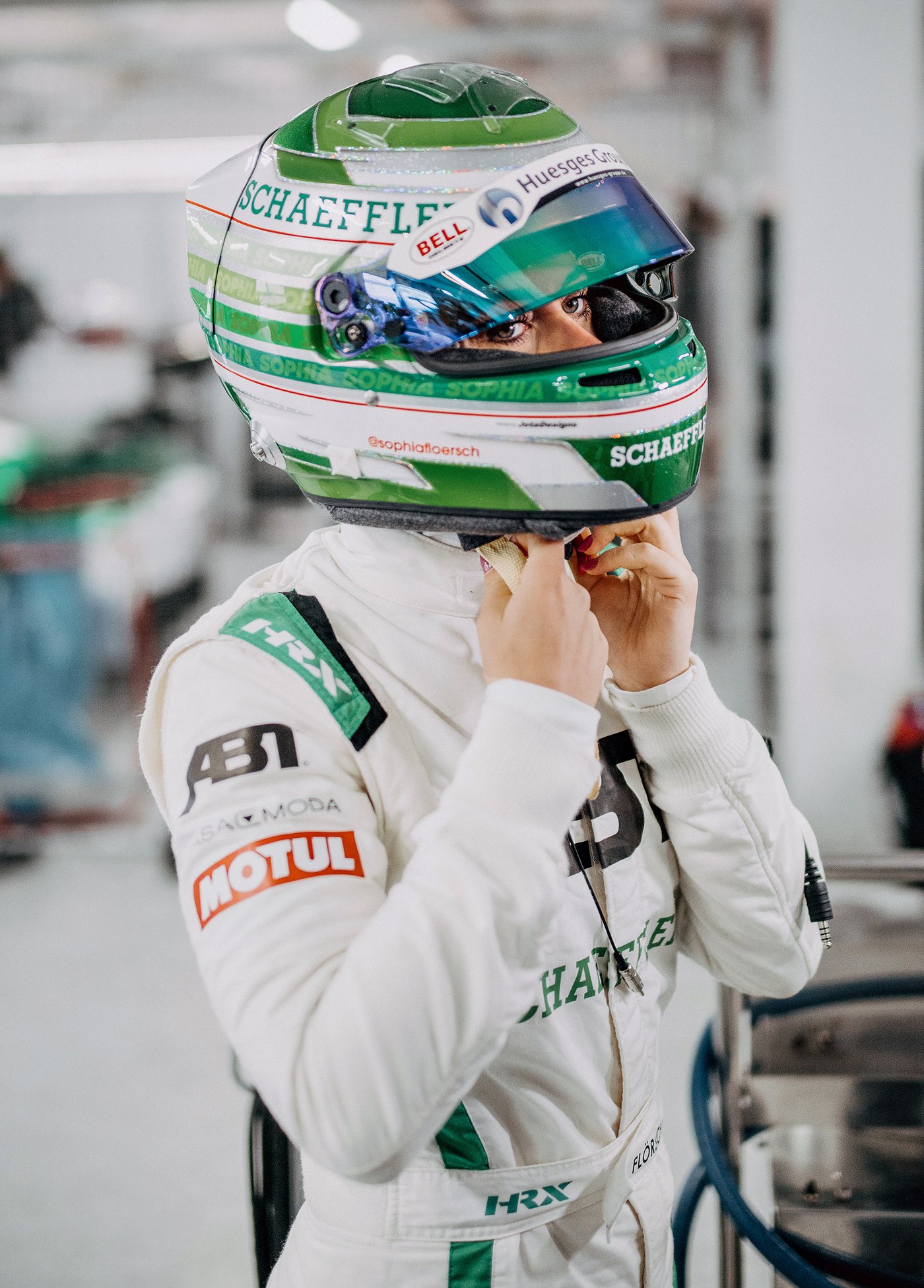
The world has learned a lot about her determination since the crash. It was a collision that seemed more like a plane crash than a car accident. A spectator’s cellphone video went viral in just minutes; it’s one of those videos that you don’t really comprehend at first because everything happens so fast that your eyes can’t quite follow—and even then, once you’ve realized what’s going on, you don’t really want to believe what you’re seeing.
It’s November 18, 2018, at the Formula Three Grand Prix on the street circuit in Macau. The field of drivers is close together, and at the end of a long straightaway there is a tight, right-hand bend. One car after the other takes the curve at a reduced speed—when suddenly something flies through the image from the right to the left, barely more than a shadow. In slow motion, you recognize it as 17-year-old Sophia Flörsch’s Mercedes. Rear-first, the car literally flies past the other cars and slams into the photographer’s stand at a height of three meters. People who saw it person, on video and live on television, including her mother back in Munich, were all certain: Flörsch was dead.
But she was sitting in the cockpit, very much alive and fully conscious, her face covered by the foam from the on-board fire extinguisher that automatically deployed. And she would have the bitter taste of that foam in her mouth the entire night, in the intensive care unit of the hospital, where she was strapped to a steel plate, waiting to be operated on. She wasn’t allowed to eat or drink, because that could lead to swelling near the shattered seventh cervical vertebra, which was pressing on her half-crushed spinal cavity. And she couldn’t sleep, either, because the doctors constantly needed to monitor whether or not she could still feel her fingers and toes.
The surgery, which started the next morning, took eleven hours. The doctors operated through her neck, bypassing the nerves for her sensory organs. In the end, they screwed the broken and patched-up cervical vertebra together with a titanium plate. After eight days, she was released from the hospital. After one hundred days, she was back in the cockpit of a race car—she later described it as the best day of her life. In February 2020, Flörsch was presented with the Laureus World Sports Award in Berlin; she was applauded from the audience by Boris Becker, Dirk Nowitzki and the seven-time Formula One world champion Lewis Hamilton.
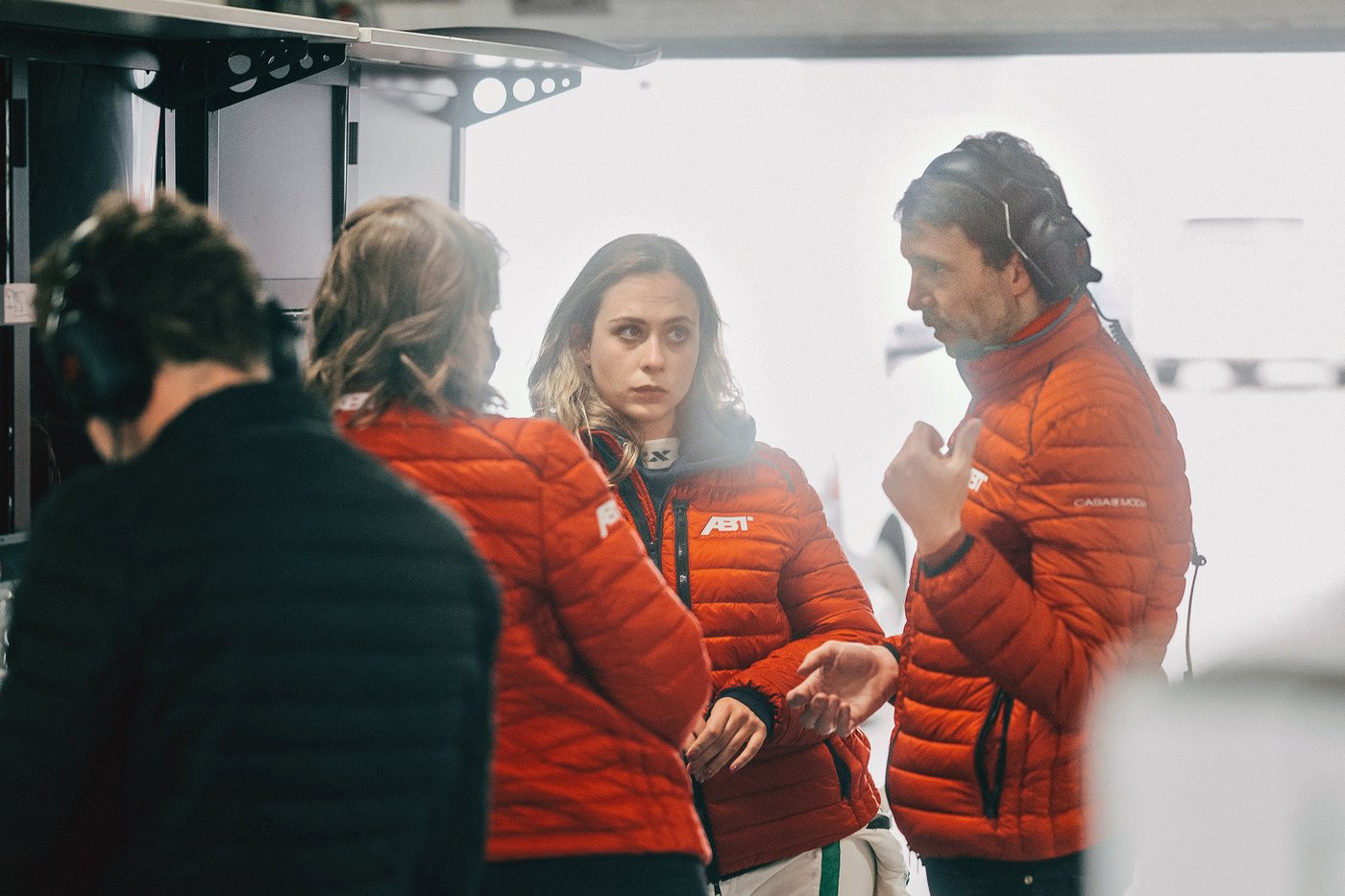
Mr. Ecclestone needn’t have worried; Ms. Flörsch is being taken very seriously indeed. And in fact, there’s really no need to even mention her gender to tell the story. But of course it is appealing to home in on the apparent contradiction between greasy mechanic’s hands and pink-lacquered fingernails, between the beauty and the 600-horsepower beast, to showcase the woman who’s forging her own path through a macho world in which women are otherwise mere ornaments, where “grid girls” are sent out in hot pants onto the track to hold umbrellas to shade the drivers.
On her Instagram account, Flörsch demonstrates that this supposed contradiction isn’t one at all. She posts photos for her nearly 500,000 followers of herself in her racing suit behind the wheel, but also in more casual clothing when she’s at the gym or in a bikini in front of a turquoise-blue ocean. In contrast to Lewis Hamilton, who posts plenty of photos of his tattooed chest while just wearing underwear, media headlines drip of double-standards and sexism: “How sexy can a female racer be?” And, also unlike Hamilton, potential sponsors were asking her about her plans for having a family when she was 15 years old. “Back then, they asked me if I had a boyfriend and if I wanted to have children,” she says. Plans for having a family? At fifteen? “I’d never thought about it before.”
Perhaps motorsport is a good example precisely because it doesn’t even pretend to be equal opportunity. Ultimately, it’s less the talent and commitment that decides who wins and loses, but much more the training conditions, the technology, the car: in short, it’s about money. And, as a rule, it’s still the men who get the lion’s share of it. Flörsch acknowledges, “As a woman, it’s difficult to find sponsors.” Because there aren’t any successful role models, no female Formula One world champion. Because despite all the expressions of respect, people somehow don’t trust a woman to get the job done. Not even Sophia Flörsch, the epitome of a woman at the head of the pack.
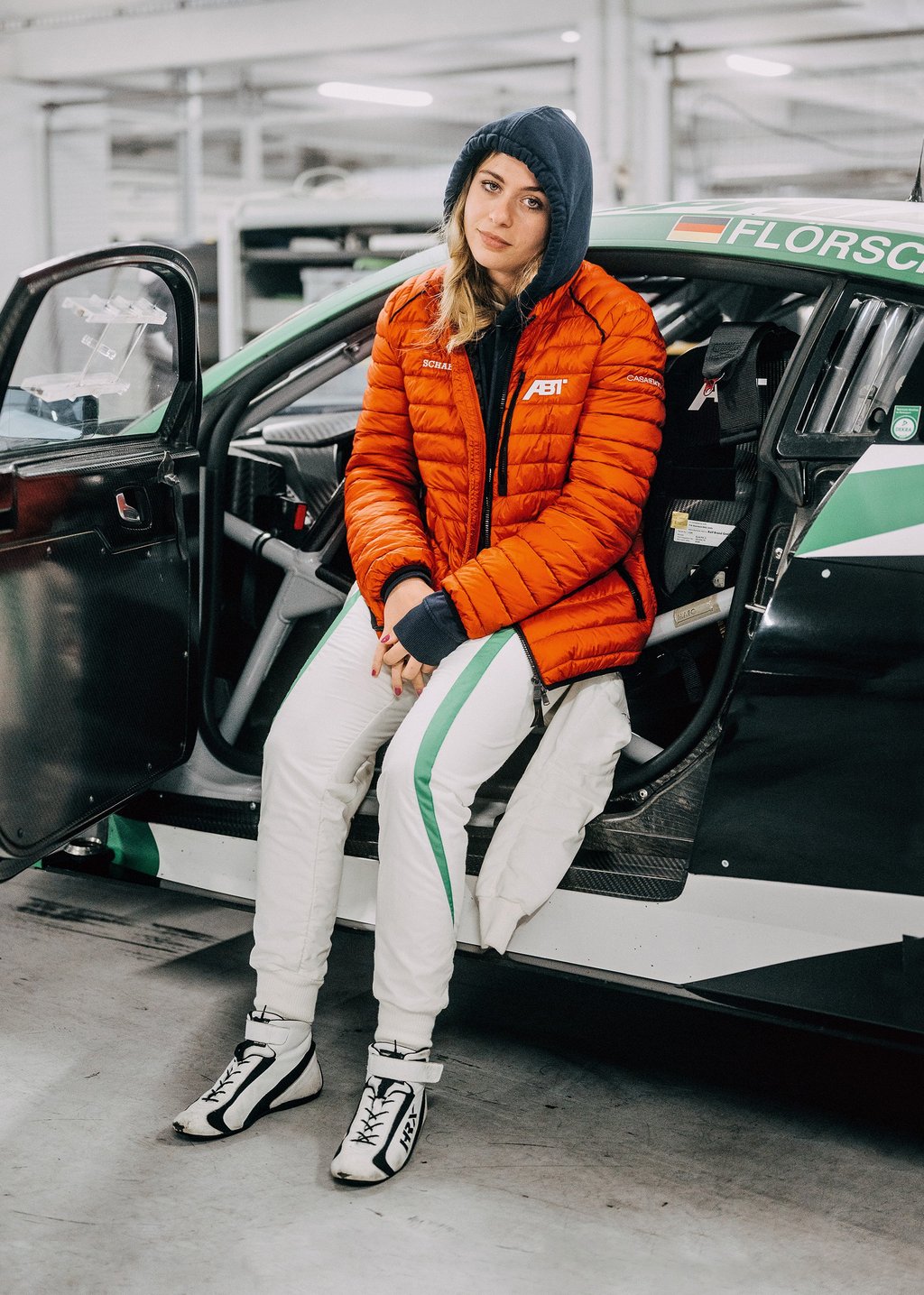

But Flörsch isn’t the type of person to complain about such adversity: not about skeptical sponsors, not about sexist comments from Formula One managers and not about the role so often thrust upon her—the heroine, with flowing locks and electric-pink fingernails, rebelling against a world dominated by men. She prefers to answer out on the track. Like she did during her first Formula Four race.
April 17, 2016, Motorsport Arena Oschersleben in Germany: Sophia, 15 years old, has been keeping pace with the other drivers for the entire race, including Mick Schumacher, the son of Michael Schumacher and himself a Formula One driver since 2021. She even held the lead in the race for a while, the first woman ever to do so. Now, at the start of the final lap, she’s currently in third place. A 15-year-old on the winner’s podium would be a sensation! Then the Dutch driver Job van Uitert attempts a passing maneuver where there’s no space to pass. His car comes down on Sophia’s rear tire, shears off the rear wing and sends the vehicle spinning into the gravel, where it comes to a stop. From the side of the track, she watches her competitors zoom past.
So what does she do? She starts up and drives back onto the course, without a rear wing. One of the television commentators, beside himself, shouts, “Will you look at that! Having the guts to get back in there after seeing the whites of your opponent’s eyes!” Third place is gone but she’s still in fifth. Curve after curve she dominates the lanes, despite the ruined rear wing.
Nobody passes her again before she reaches the finish line.